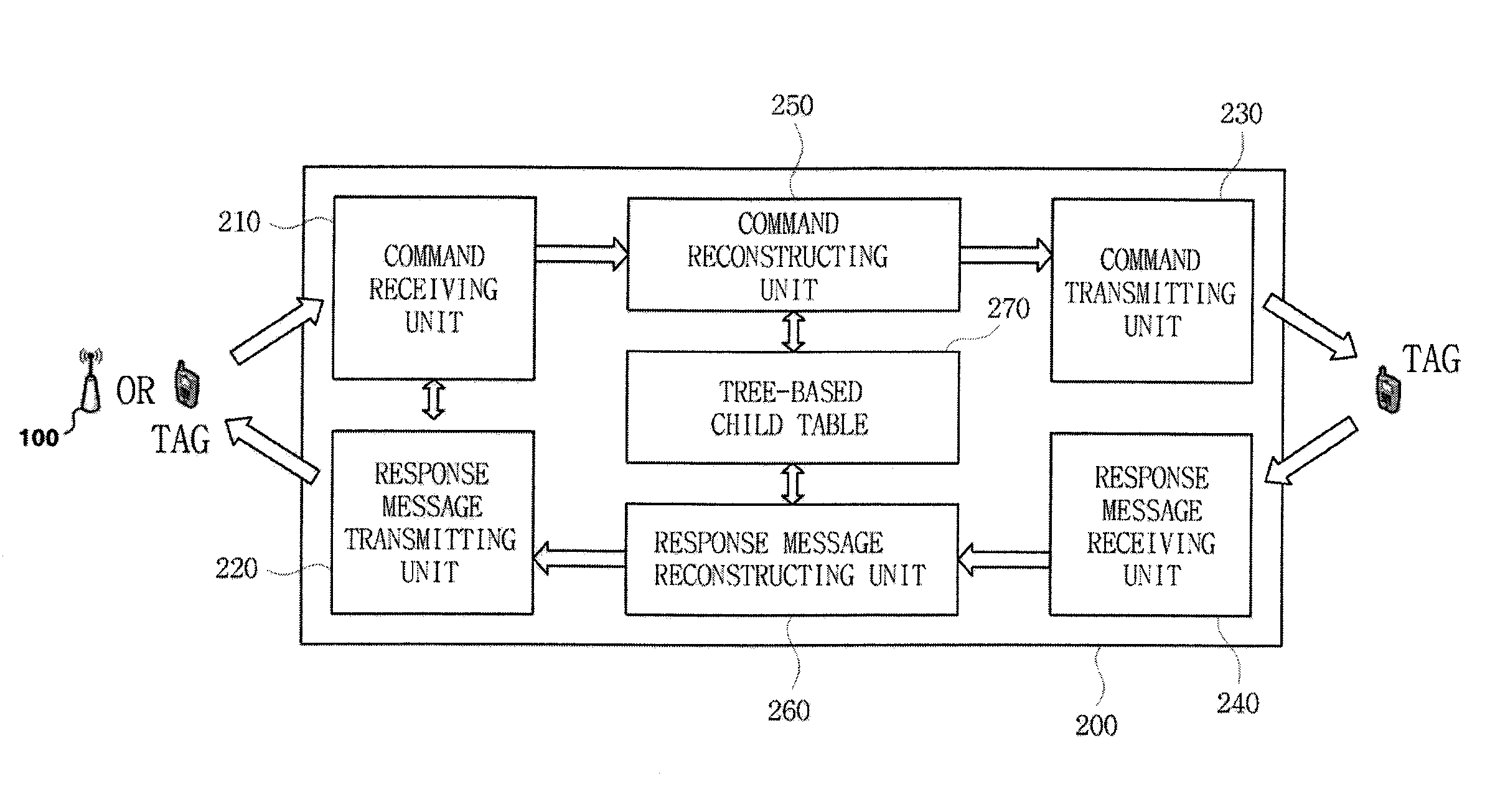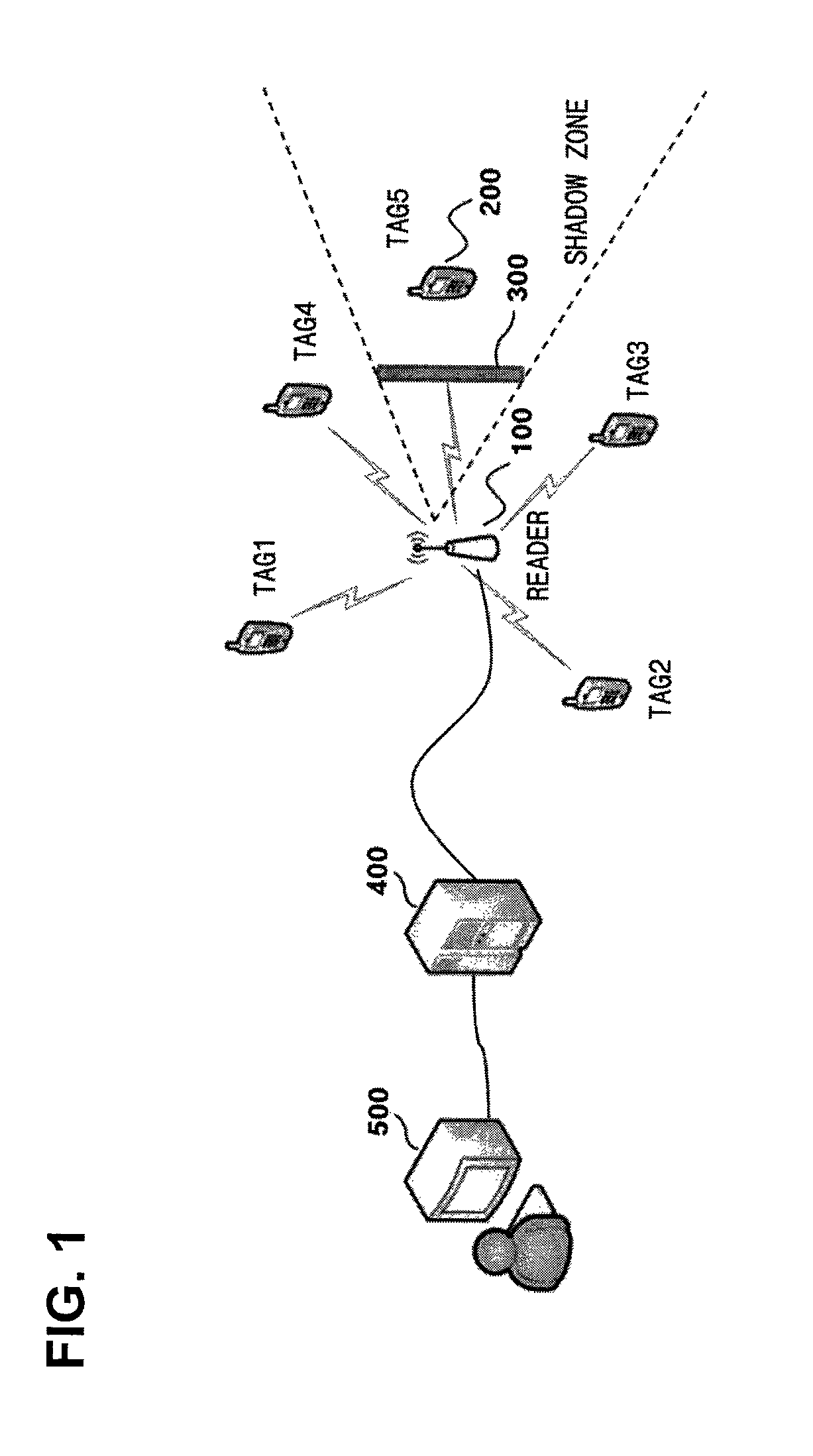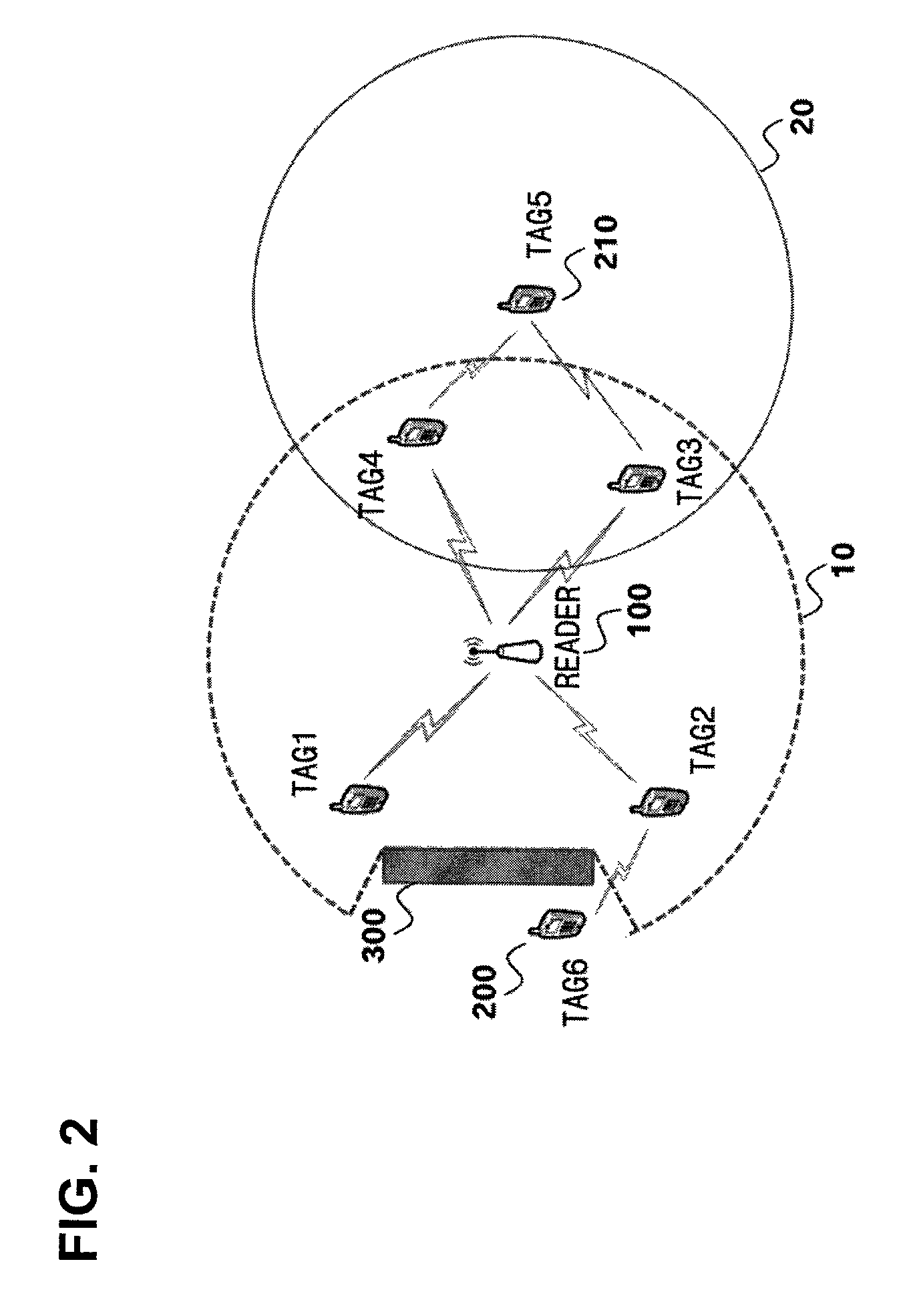Active RFID system for port logistics using multi-hop communication and communication method in the system
a multi-hop communication and communication method technology, applied in the field of efficient processing, can solve the problems of increasing personnel expenses, unable to quickly identify the state of items that are changed every hour, and managers may have difficulty in identifying the existence and state of items
- Summary
- Abstract
- Description
- Claims
- Application Information
AI Technical Summary
Benefits of technology
Problems solved by technology
Method used
Image
Examples
Embodiment Construction
[0036]Objectives, characteristics, and advantages of the present invention will be apparently described with reference to the accompanying drawings, in which exemplary embodiments of the invention are shown.
[0037]Hereinafter, an active radio frequency identification (RFID) system for port logistics using multi-hop communication and a communication method in the RFID system according to one or more embodiments of the present invention will be described with reference to the accompanying drawings. The present invention may, however, be embodied in many different forms and should not be construed as being limited to the embodiments set forth herein; rather, these embodiments are provided so that this disclosure will be thorough and complete, and will fully convey the concept of the invention to those skilled in the art. Thus, it should be understood, however, that there is no intent to limit exemplary embodiments to the particular forms disclosed, but on the contrary, exemplary embodim...
PUM
 Login to View More
Login to View More Abstract
Description
Claims
Application Information
 Login to View More
Login to View More - Generate Ideas
- Intellectual Property
- Life Sciences
- Materials
- Tech Scout
- Unparalleled Data Quality
- Higher Quality Content
- 60% Fewer Hallucinations
Browse by: Latest US Patents, China's latest patents, Technical Efficacy Thesaurus, Application Domain, Technology Topic, Popular Technical Reports.
© 2025 PatSnap. All rights reserved.Legal|Privacy policy|Modern Slavery Act Transparency Statement|Sitemap|About US| Contact US: help@patsnap.com



